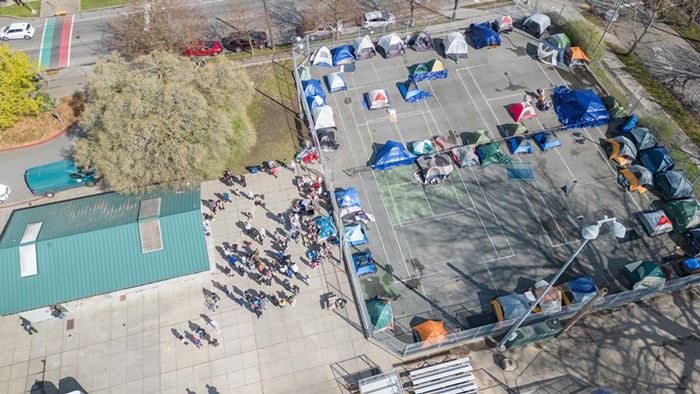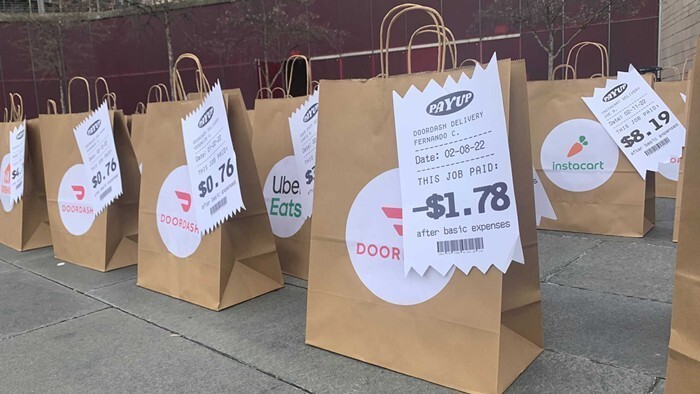
Anecdotally, we knew COVID-19 hit the arts sector hard. Now, we have more data to back it up.
On Wednesday, ArtsFund released a massive report detailing the extensive impact the pandemic has had on arts organizations in Washington state. The Covid Cultural Impact Study quizzed 200 cultural nonprofits in the state across a wide range of disciplines, as well as another 1,500 individuals, on their experiences during the last 18 months. The study provides a snapshot of the state of the sector and gives recommendations on how to move forward.
From 2019 to 2020, ArtsFund found a $131.6 million drop in earned revenue at its surveyed organizations, with a $35.7 million jump in contributed revenue through things like grants and donations. That leaves the total staggering decrease in revenue at around 21%, or $95.9 million. And that's not including 2020-2021, which ArtsFund CEO Michael Greer says saw an additional 60% reduction in earned revenue. Damn, where's all the NFT money when you need it?

That financial upper-punch to the gut was not felt equally by all arts organizations. The study found that the bigger a cultural organization was, the more pandemic relief funding it had access to receive, like the federal Payroll Protection Program.
Interestingly, many smaller BIPOC-identifying organizations reported "significantly increased attention and funding" following the Black Lives Matter protests during the summer of 2020. The survey group saw a 29% increase in contributions between FY 2019 and 2020. But in FY 2021, the story changed significantly; ArtsFund reported that the contributed revenues for that year “are lower than their FY 2019 baseline,” dropping 50% from FY 2020 to 2021.

In fact, in one case study that focused on Seattle's LANGSTON, ArtsFund reported that the Black-led cultural organization initially appeared "to be financially in better shape than ever" because of "2020 funds prioritizing BIPOC organizations." However, now that white folks have stopped posting Toni Morrison quotes on Instagram as "advocacy," that funding has all but gone up in smoke. Ironically, the temporarily boosted financials from 2020 have even prevented LANGSTON from applying to grants aimed at small organizations.
"We all need funding, but perhaps, even more, we need to see big shifts in how culture work is valued and invested in generally," wrote LANGSTON executive director Tim Lennon in an email to The Stranger. Lennon called for "massive changes to the systems that have maintained private and public funders' power over our communities' destinies."
During the pandemic, LANGSTON also helped scale the Seattle Artists Relief Fund, initially started by Ijeoma Oluo, Gabriel Teodros, and Ebony Arunga in March 2020. The fund gave direct aid to artists and cultural workers statewide, prioritizing artists from minority backgrounds. By the time it closed in spring 2021, it had raised and given away more than $1.1 million to over 2,100 individual artists, four times LANGSTON's operating budget.
The relief fund is something that Lennon would like to replicate again this year with a sustainable funding and social infrastructure support program aimed specifically at Black artists and cultural workers in the area. "Long term, we envision the success of this project shifting existing norms of private philanthropic and public sector funders, encouraging them to better invest in community-created solutions like ours," said Lennon.

The pandemic also had an outsized impact on labor in the cultural sector. 41% of the organizations surveyed reported that they furloughed workers or reduced staff hours and/or pay, a number that Greer called "really significant." Further, 46% of organizations surveyed made changes to their staffing model, with 62% believing those changes to be permanent. Overall, the arts sector workforce is at 60% of pre-COVID base, with wages at 68% of pre-pandemic levels.
The bottom line? There are a whole lot fewer Washingtonians working in the arts and culture sector now than before the pandemic. And the ones who remain aren't making the same wages as they did in "The Before Times." That's not even accounting for self-employed artists or artists who do not formally tie themselves to one institution. And as a city that has a deep housing affordability crisis, Seattle is on the precipice of a "cultural brain drain," with creative people fleeing to cities with cheaper living costs.
"I think there will be a bit of a brain drain in the short term, as some theatre-makers choose not to come back,' said one King County nonprofit cultural organization quoted in the study. "I think we will have a recovery, but it will take several years."

Doom and gloom aside, there was some hope in the study. 93% of respondents said arts orgs will be "very to somewhat important" to our state's post-pandemic recovery.
ArtsFund made five recommendations that focus on "the idea that arts and culture can be leveraged for social and economic transformation." Those include ~reimagining~ the role that arts and culture play in economic recovery and encouraging cross-sector playtime. Highlighting pandemic relief funding's pivotal role, ArtsFund also called for legislation that more sustainably funds the sector.
They also recommended:
It's important to highlight that ArtsFund collected this data before the omicron wave sent COVID case numbers into the stratosphere. While the impact of recent COVID closures and work shortage will undoubtedly affect the arts sector now, the variant doesn't fundamentally alter any of the study's findings or recommendations.
"All of these recommendations are really designed to strengthen this sector for not just omicron, but for any future uncertainty that's gonna come at it," said Greer. "We know that it's not the last, and there will be more uncertainty in the world going forward. We want to make sure the sector is prepared for it."



















